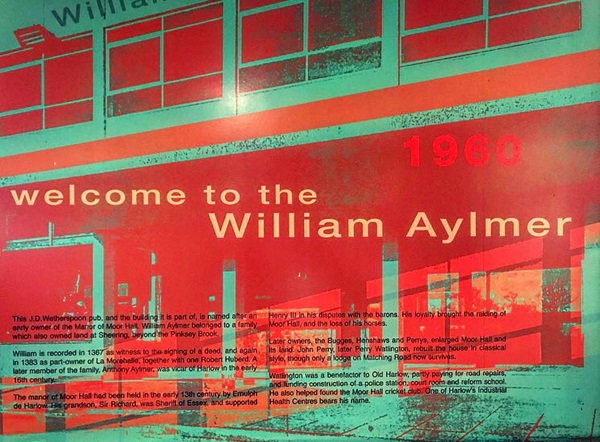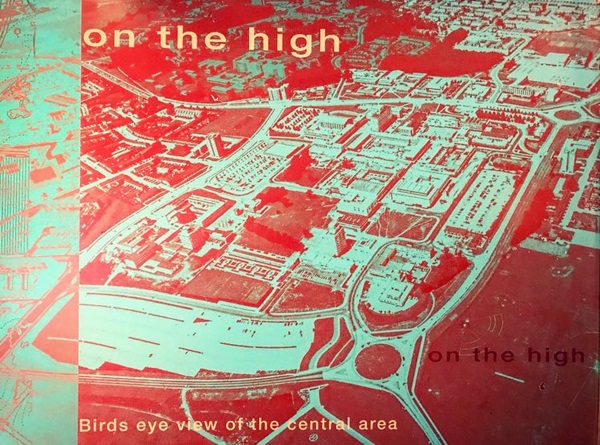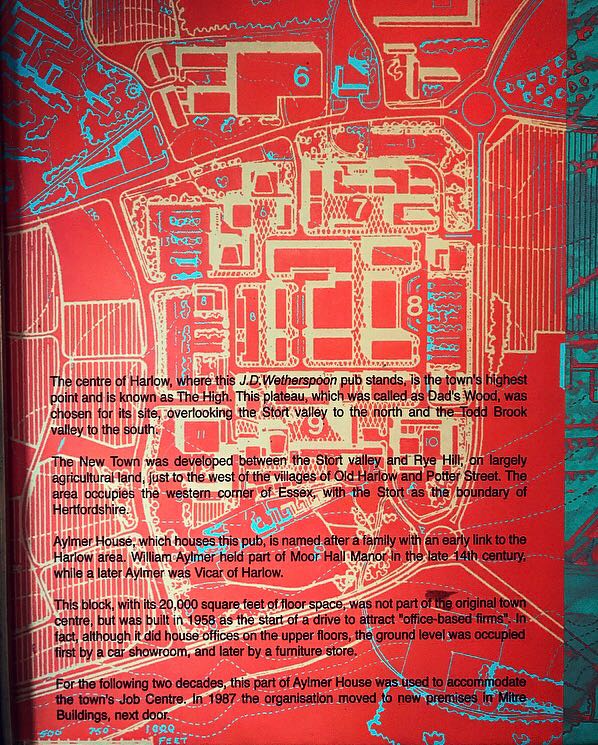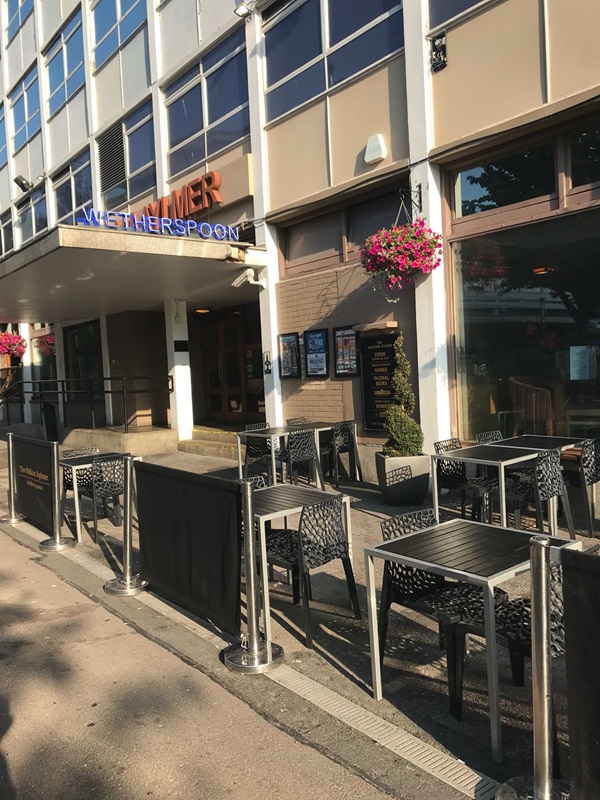Built in 1958, Alymer House takes its name from the Aylmer family of Moor Hall, once Harlow’s most important residence. The earliest recorded member of the family was William Aylmer, who (in 1383) had an equal share in Moor Hall. A later family member, Anthony Aylmer, was vicar of Harlow during 1510–1518. By the 17th century, Moor Hall had become a large country house and was Harlow’s leading residence. At the end of the 18th century, the estate was extended and the house rebuilt. Nothing now remains of this grand, classical-style building.
A print and text about The William Aylmer.

The text reads: This pub and the building it is part of is named after an early owner of the Manor of Moor Hall, William Aylmer belonged to a family which also owned land at sheering beyond the Pinksey Brook.
William is recorded in 1367 as witness to the signing of a deed, and again in 1383 as part owner of La Morehelle, together with one Robert Huberd. A later member of the family, Anthony Aylmer was vicar of Harlow in the early 16th century.
The Manor of Moor Hall had been held in the early 13th century by Emulph de Harlow. His grandson, Sir Richard, was sheriff of Essex, and supported Henry III in his disputes within the barons. His loyalty brought the raiding of Moor Hall and the loss of his horses.
Later owners, the Bugges, Henshaws and Perrys, enlarged Moor Hall and its land. John Perry, later Perry Watlington, rebuilt the house in classical style, though only a lodge on matching road now survives.
Watlington was a benefactor to old Harlow, partly paying for road repairs and funding construction of a police station, court room and reform school. He also helped found the moor hall cricket club. One of Harlow’s industrial health centres bears his name.
A birds eye view of the central area.

A print and text about Harlow.

The text reads: The centre of Harlow, where this pub stands, is the towns highest point and is known as The High. This plateau, which was known as Dad’s Wood, was chosen for its site, overlooking the Stort Valley to the north and the Todd Brook Valley to the south.
The new town was developed between the Stort Valley and Rye Hill, on largely agricultural land, just to the west of the villages of Old Harlow and Potter Street. The area occupies the western corner of Essex, with the Stort as the boundary of Hertfordshire.
Aylmer House, which houses the pub, is named after a family with an early link to the Harlow area. William Aylmer held part of Moor Hall Manor in the late 14th century. While a later Aylmer was vicar of Harlow.
This block with its 20,000 square feet of floor space, was not part of the original town centre, but was built in 1958 as the start of a drive to attract ‘office based firms’. In fact, although it did house offices on the upper floors, the ground level was occupied first by a car showroom, and later by a furniture store.
For the following two decades, this part of Aylmer house was used to accommodate the towns job centre. In 1987 the organisation moved to new premises in mitre buildings, next door.
External photograph of the building – main entrance.

If you have information on the history of this pub, then we’d like you to share it with us. Please e-mail all information to: pubhistories@jdwetherspoon.co.uk